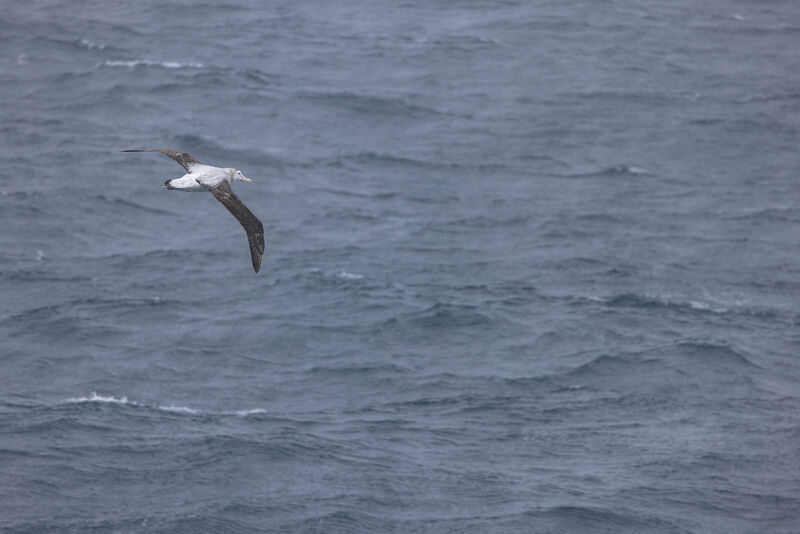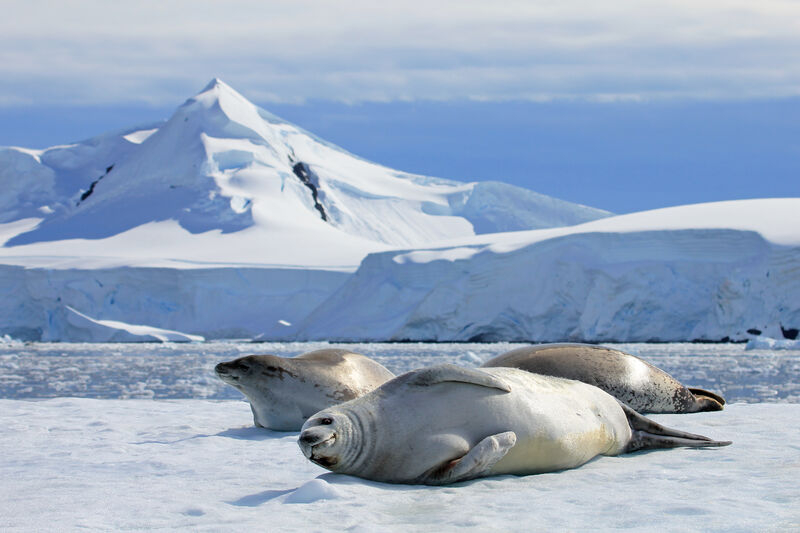
Antarctic Animals Living on Land
Among the land animals, penguins of the South Pole are undoubtedly the stars. For many, penguins are the headline act when it comes to visiting Antarctica — and they certainly are iconic. Seven species of penguins live in Antarctica, and each has its own charming characteristics.
From petite Adélie and Chinstrap penguins to the majestic Emperor penguins, these flightless creatures are the most abundant birds in the Antarctic. Around 12 million penguins live on the Antarctic Peninsula, where conditions are relatively mild. These birds are adapted to the harsh climate, with fascinating traits that help them endure the cold and find food.
If you want to see impressive courtship displays, November is the best month to visit Antarctica’s penguins.
Aside from penguins, there are plenty of other birds to spot in Antarctica. From terns and petrels to shearwaters and shags, there are over 46 species of birds enjoying the fresh Antarctic air.
Perhaps the most impressive is the albatross. With a wingspan of up to 11 feet (3.35 metres), this colossal bird is the largest in the world. As well as its size, the albatross is known for its elaborate courtship ritual — a dancing display that bonds a couple for life.

Antarctic Marine Animals
The Southern Ocean is home to an astonishing variety of marine life. Antarctic sea creatures, including the colossal squid and various species of fish, have unique adaptations for the cold waters. Whales, including the mighty blue whale—the biggest animal in Antarctica—can often be spotted, feeding on the abundant krill. Weighing about the same as 33 elephants and reaching up to 30 metres long, this impressive creature is the largest animal on Earth. Sadly, blue whales are critically endangered, making a sighting all the more special.
Although they are known as ‘killer whales,’ orcas are actually a member of the dolphin family. These sleek marine mammals are the largest carnivores on the planet and are at the top of the food chain in Antarctica. They’re also incredibly intelligent, powerful, and striking to see.
Seals, another key group of mammals in Antarctica, are frequently seen lounging on the ice or swimming in the icy waters. Often falling prey to orcas, seals are another abundant species in Antarctica. You may see six different species of seal: Leopard Seals, Ross Seals, Southern Elephant seals, Crabeater Seals, Weddell Seals, and Antarctic Fur Seals.
How do seals cope with the extreme Antarctic climate? Well, they have a thick layer of blubber and fur to keep them warm, making them well suited to the environment. In fact, sometimes seals get too hot and need to take an icy dip!
Krill are an intrinsic part of the Antarctic ecosystem. The small, shrimp-like creatures are at the bottom of the food chain (with only phytoplankton beneath). You may not see them, but krill will be keeping the Antarctic wildlife going — particularly the whales, for whom krill are the primary source of sustenance.

Information and Useful Tips for Spotting Them
To make the most of your Antarctic adventure, here are some tips for spotting these incredible animals in Antarctica:
- Best Time to Visit: The austral summer (November to March) is the best season for wildlife viewing.
- Guided Tours: Our guied tours with experienced naturalists provide insights into the wildlife and ensure respectful, safe interactions.
- Stay Patient: Wildlife spotting requires patience. Keep your eyes peeled and stay quiet to increase your chances of sightings.
FAQ
What characteristics do animals need to survive in Antarctica?
Animals in Antarctica have developed unique adaptations to survive the harsh conditions. These include thick blubber for insulation, behaviors such as huddling for warmth, and specialized diets to cope with limited food resources.
